Webisode #4: La Brea Bakery – Part One
Here we are, at the famous, original LaBrea Bakery (not the facility that makes all the par-baked bread that is shipped across the country and sold at supermarkets, but the one that Nancy Silverton founded to serve the people and restaurants of Los Angeles). It takes a bakery to make all the dough required by a place as popular as Pizzeria Mozza because they produce anywhere from 500 to 700 pizzas a day, and that’s a lot of dough to make–probably somewhere around 300 to 400 pounds of dough balls! How fortunate that Nancy, who no longer owns LaBrea Bakery, has such a close relationship with it because, even in the expansive Mozza kitchens there’s definitely nowhere near enough room to make this much dough with this much complexity. What you’re about to see in this segment is the application of the artisan bread making technique that Nancy mastered when she created LaBrea Bakery, now applied to a normally simple product called pizza dough.
We were greeted at the door of the large building in an industrial part of town, by Production Manager Jon Davis, who took us inside the production area and showed us everything except the “secret ingredients” and the actual formula. In this segment, we’ll see the preferment (aka poolish, or sponge) being made and then added to the final dough, which comes together beautifully. Next week, in LaBrea Bakery Part Two, we’ll see what happens from this point until it arrives at Pizzeria Mozza where it is transformed into ethereal pizzas.
I often speak and write about bread being the result of a series of transformations: wheat transformed into flour; flour transformed into living, leavened dough; and dough transformed into bread. Of course, with pizza, there is one additional transformation: bread dough into pizza. I define a transformation as a radical change of one thing into something totally new and other. For instance, living wheat is killed when it is pulverized into flour, all it’s life giving properties now destroyed. But when it is combined with salt, water, and leaven (yeast) it changes into a new substance and comes back to life as dough where it continues to transform itself through the biological activity of yeast, bacterial, and enzyme activity. When it is put into the oven, however, the dough gives up this life; the yeast is killed, as are all the living organisms in the dough that brought forth its unique personality and flavor, but in the process the dough is transformed into bread. That is, it goes in alive and comes out dead, but it goes in as dough and comes out as bread. In one analogy, it is like a caterpillar goes into the oven but a butterfly comes out–yes, a radical transformation. In rare instances, such as often occurs at Pizzeria Mozza, there is yet one additional transformation that takes place (and here I stretch the metaphor to, possibly, the snapping point, but bear with me): pizza transforms itself into deliriously happy people!. Or more accurately, the people are transformed by the pizza into a state of pure culinary bliss.
But I get ahead of myself. For now, just glory in the transformation of flour into dough and, as we continue this series on Pizzeria Mozza in the coming weeks, we’ll go through the whole string of marvelous transformations together. Enjoy!!
Recent Articles by Peter Reinhart
- “Tommy & Atticus” in Redondo Beach, CA. A Sourdough Success Story
- Howard Brownstein on Turnaround and Crisis Management
- Randy Clemens and Forest Farming in Uruguay — The Back to The Earth Movement is Back!
- It’s not too late to chase your dreams: “Pizza From the Heart” A New Book by Paulie and Mary Ann Gee
- Kyle Ahlgren on the Artisan Baking Center Online Classes (and a special offer)
- Multi-James Beard Nominee Cathy Whims of Portland’s Nostrana and her Brand New Book
Add Comment
You must be logged in to post a comment.



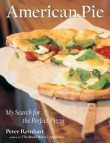
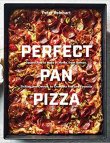
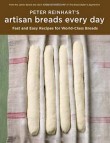
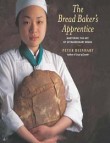
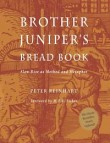
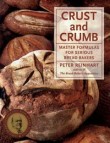
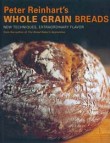
Love this place Peter, thank you.
I have a question. Most of us know the basic for bread or pizza dough, A yeast, flour, water, salt, some perhaps an oil.
The statement of “secret ingredients” has me curious. Not that I want to steal the recipe. Just the what else is there to a dough to make it so guarded. The only thing I can think of is some sort of flavoring or dough conditioners. So without betraying any trust issues or letting the secret slip. In general what other things can be added to a dough when made at that quantity and how would that translate to the home pizza maker. Thanks
Wow! I have been to Mozza and can say they make fabulous pizza. They have figured out how to make a beautiful thin crust that does not get soggy in the middle. I can’t help but wonder what those secret ingredients could be!
Nothing weird, just things like other grains. Not sure what they are–they wouldn’t tell even me–but I’m guessing something like a small amount of whole wheat flour and/or rye flour. Maybe some malt, but I’d just be guessing. Hey, they spent a long time perfecting this dough (I read somewhere it took about six months of testing and tweaking), so I wouldn’t expect them to tell us everything. But I know they have a commitment to natural ingredients so that wasn’t dough conditioner. In fact, the [i]poolish[/i] (ie sponge) method that you saw in the video is the real dough conditioner–and that’s totally natural artisan technique.
Do they use any kind of bread improver and how long they preferment the spong? over night or 48 hours?
With a little internet searching the Mozza recipe calls for a tiny amount of rye flour and wheat germ, honey and salt with a relatively low protein flour Mellow Judith. They do teach dough making classes out of their restaurant so the recipe is out there. The rye flour and wheat germ surprised me.